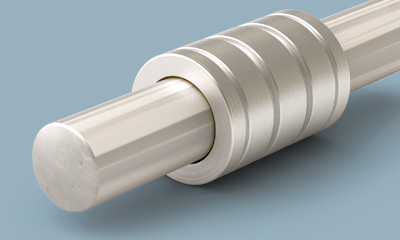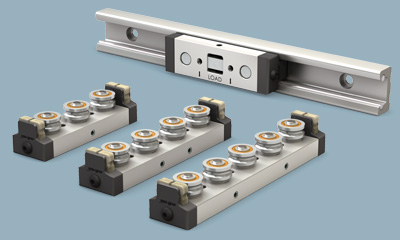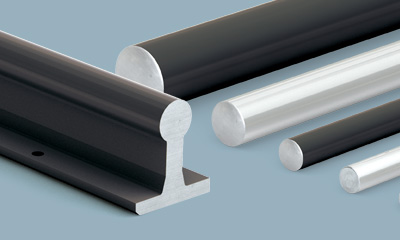The design and build of automation equipment in washdown environments presents challenges for design engineers. A “washdown environment” is one that utilizes cleaning with pressurized or superheated water, chemicals, or a combination of both by means of either automation or hand washing. Generally, the overall goal of a washdown application is to kill and eliminate bacteria or other microorganisms that can cause and spread disease.
There are set standards and regulations that a company must comply with in washdown applications. These regulations are inspected by multiple local, state, and federal organizations to ensure materials and machines are compliant and have met the standards for cleanliness and performance. Some of these organizations include, but are not limited to the FDA, HACCP, GRAS, USDA, 3-A Sanitary Standard, Inc., NSF International, and ASTM.
There are multiple choices for linear motion designs that are best suited for washdown applications. These products and materials aid in achieving the standards that are required to operate in certain industries. PBC Linear offers a variety of products and materials that meet these standards.

Simplicity® linear plain bearings exhibit substantial benefits when compared to other styles of linear bearings. These self-lubricating bearings are available in three grades of Frelon liners including FrelonGOLD®, Frelon® J, and Frelon® W(FDA compliant), and help to decrease the amount of material deposits and potential for bacteria build-up. The Frelon liner is not only self-lubricating, but also offers wiping action on the shaft, enabling smooth linear motion. These capabilities lengthen the life of the linear motion system and avoid catastrophic failure. The range of outer shell materials and bearing raceway materials are designed to perform extremely well in a wide variety of conditions where washdowns, intermittent spray, or even submersion in a variety of chemicals may occur. Customers interested in more details on this topic can download the full Simplicity Chemical Reaction Chart.
Redi-Rail® Linear Guides are highly resistant to corrosion in washdown applications. Their rails are aluminum and contain an antimicrobial powder coating, and are embedded with 440 stainless steel shafts. Sliders are composed of 440 stainless steel bearings, with the option of 3, 4, or 5 wheels.
Commercial Rail Linear Guides are corrosion resistant and cost effective. They contain a 3-wheel slider composed of 440 stainless steel sealed bearings that ride on roll-formed 304 stainless steel rails.
V-Guide Systems are v-wheel bearings constructed of 420 stainless steel and 304 stainless steel shields or nitrile rubber seals, and 400 series stainless steel rails.

The corrosion resistance and durability of stainless steel is typically preferred for general use in direct food contact areas. There are variations in stainless steel grades, mostly in the levels of chromium and nickel, that include a 300 and 400 series stainless steel.
300 Series Stainless Steel features relatively soft and non-magnetic properties, and cannot be hardened. It is widely accepted for food and medical applications and may be varied slightly for different strengths and weaknesses (303, 304, and 316).

400 Series Stainless Steel contains several types, but the most widely available and most used is the 440 stainless. It can be heat treated and hardened for use in cutlery, linear shafting, and in applications requiring higher wear resistance. Due to its carbon makeup, it will oxidize under washdown conditions.
If weight is a concern in some washdown environments, engineers can use coated aluminum for protection against pitting and cracking. Anodizing, ceramic coating, or other types of coatings with PTFE or other fillers may be used, but they don’t provide the resistance or life that stainless steel offers. Stainless steel is preferred in more caustic chemical washdown environments.
Electroless nickel coatings have become popular because of their combination of corrosion and wear resistance and smooth polished appearance. Some forms include a PTFE infusion to aid in non-stick properties. Most forms of this coating are FDA compliant as well.
Non-metal materials including plastics, polymers, and fillers are increasingly being used inside of mechanical drive components, guides, bearings, fasteners, and more. They are utilized because of their cost, weight, and ease of manufacture. Many solid plastics, such as injection-molded bearing inserts, present drawbacks in washdown applications. Most of these will absorb liquid, causing the components to swell and increase the potential for binding and catastrophic failure.
To learn more about linear motion design and optimization for washdown, download our Linear Motion Design for Washdown Applications white paper.